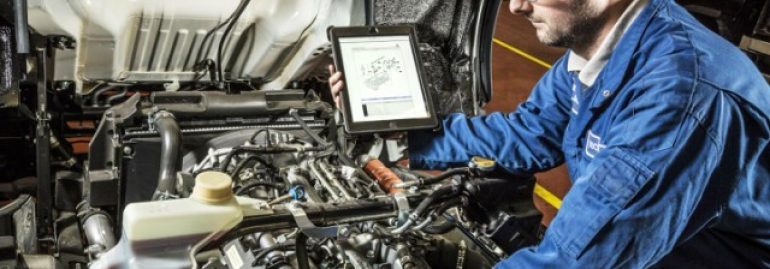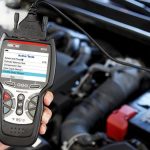The troubles in a car engine are usually hard to analyze. In the event where the motor stars fizzling, it will start to create different kinds of issues and will make it hard for you to realize what the main problem is.
At the point where the engine starts misfiring, you may lose control and the vehicle may stop discharging emissions as well.
Among all, the problems in the cylinder are considered to be the most recognized reason for emission discharging issues on mobiles nowadays.
A particular barrel may be problematic or a number of cylinders may misfire.
When the engine of the vehicle becomes faulty, consider the manufacture date of the vehicle and if the vehicle was built after 1996, refer the check engine bulb which may go ahead or streak.
Moreover, the information system may store a troubleshooting code similar to P0304 or something like that, so you could easily identify what the problem is according to the code.
But if the vehicle was made before 1996, the computer system may not be able to get information regarding the failure of the engine and also there would be no check engine light in vehicles which were manufactured prior to 1996.
That is the time when you will have to find a mechanic for you to find a solution. Or even better is to work out the problem with an OBD2 scanner / software solution, which is how mechanics would usually solve it anyway.
Demonstrating an Engine Misfire
Through demonstrating an engine misfire, you have to identify what it is. When the machine is operating smoothly and when all the other cylinders are “terminating,” you could state that the engine is running smoothly.
When a particular proportion of air fuel inside the burning sector of the barrels gets interfered, the engine will start to prompt misses.
One or more cylinders can misfire on different circumstances. Failure to discharge can occur due to various distinctive things.
Ignition parts are most likely to be the root cause for the engine misfires in many occasions; still there are many things, like low fuel pressure, fuel supply, defective fuel injectors and even central motor mechanic issues can make the engine misfire.
Below you can see video that’ll give some tips on how to work out the engine misfire…
Types of engine misfires
According to the investigations conducted by different companies, they have found different reasons for engine misfires.
But majority of them indicated that the most common reasons for engine misfiring are ignition system defect, fuel system defect and internal engine defect.
Ignition system defect
The pattern of the ignition will demonstrate the durability of an ignition system. Figuring out how to utilize and reading the type of ignition may take some time; yet once you will understand what you need to analyze, it might turn out to be significantly easy.
Basically you will search for huge contrasts in firing voltages between cylinders, or indifferent spark lines demonstrating coil or dwell issues.
Spark plugs somehow destroy at the end and can end up noticeably fouled via carbon stores.
A fouled plug may misfire causing low power and efficiency, and a major increment in deplete hydrocarbon (HC) emanations – which may in the end harm the exhaust system.
Fouled or defective spark plugs don’t let the engine start smoothly. So suitable precautions have to be taken when such a problem arises. Replacing the spark plugs can reestablish ordinary execution of the engine.
However, it won’t settle a misfire issue if the cause is due to terrible plugs wires or a weak coil.
Under normal driving conditions, the set of spark plugs will normally last around 40,000 miles.
Check out your vehicle proprietor’s manual to know whether the time is up for the suggested substitution interim.
Long life plugs usually have a middle terminal and are made of a wear-safe metal; for example, platinum or iridium.
They commonly go up to 100,000 miles before substitution is required. In the event that your motor has standard attachments, consider choosing long life plugs.
Fuel system defect
Fuel channel is a typical part of the administration segment found on every vehicles outfitted with inward burning engines.
They are built to separate any particles that might be available in the fuel, shielding them from entering the vehicle’s fuel framework and possibly harming the segments or the motor.
Just like the case with most car channels, after some time, the fuel channel can turn out to be too much filthy, to the point where it can never again filter particles productively or it can even limit stream.
Typically, a defective fuel channel will deliver to the driver the indications of an issue with the vehicle regarding fuel filtering and gradually the performance of the vehicle will decrease. Another normal indication of an issue with the fuel channel is motor performance issues, which can usually be discovered with a professional scantool.
Every once in a while, the fuel channel can be stopped to the point where it contrarily influences motor execution. A seriously grimy or clogged up fuel channel can make the vehicle encounter engine misfires, lowering in power and acceleration, and notwithstanding slowdowns.
Internal engine defect
This is the worst case model that you want to expect because internal engine parts are very expensive and tend to change the requirement of labor.
This scenario will help you understand the tentativeness to the internal defects and the direst outcome imaginable is a vehicle owner who continues driving a long journey with the vehicle which looks fine and dandy from the outside.
But if they ignore the glimmering check engine light while travelling, it will be stopped in the middle of the journey because the more you travel with a fault the deeper the trouble that will be because the vehicle consumes the impetus and causes harm to the engine rapidly when travelling with a fault in the engine.
The fix would then be something serious and to a great degree expensive, like a reactant converter or engine substitution which will cost between $1,000 and $4,000.
Codes related to engine misfires
A flashing check engine light and a P0301 to P0312 analytic trouble shooting code is a sign that at least one of the chambers is misfiring. Normal misfires may be unnoticed, but a long sticking engine misfire is difficult to miss. Code can be extracted via OBD2 software.
The engine may start to feel unpleasant, need power and use more gas than expected. In some cases, a failure to misfire may feel like a vibration. A misfire will cause a tremendous increment in hydrocarbon (HC) emanations, which can make a vehicle lose an outflow test.
The misfires that turn on the check engine light and prompts a particular error code are the most easiest to analyze.
The computer system will distinguish the cylinders that are not contributing their ordinary measurements of energy and set a code that relates to the firing sequence.
A P0303 code, for instance, would disclose to you that the No. 3 cylinder is failing.
To make sense of which chamber is No. 3, inspect an demonstration of the engines miss firing order or search for markings on the intake manifold, spark wires or ignition loops (if the motor has a coil on-plug ignition system).
When you have a misfiring code in your hand, you can directly negotiate the problem easily.
Codes that help indicate engine misfires:
- P0505 to P0509 – idle control circuit codes
- P0335, P0336, P0337, P0338, P0339 – crankshaft position sensor codes
- P0171, P0174 – lean fuel condition codes
- P0400 to P0409 – EGR related codes







Most common symptom: The engine staggers for a moment and then regains its normal pace. Engine misfires can be caused by number of faults, but there are a few common that occur most frequently. The primary source is related to spark or fuel… normally occurring in spark plugs, plug wires, the coil(s) or the fuel-delivery system.
engine misfire issues can be easily analyzed via car fault diagnostic tool or typical obd mil-fault reading scanner.
Engine misfire can be easily scanned via professional obd2 scanner. As it’s generic OBD code, thus would work with most diagnostic tools on the market.
Cause of engine misfire:
1. The Ignition System
Ignition parts which include spark plugs, ignition wires, and coil packs wear or corrode over time. They have a specific lifespan and have to be replaced after that time. When any or a couple of these parts start to wear out, there will be a point when in time, the spark plugs don’t get insufficient electricity to create sparks.
2. Check the Fuel System Components
If the issue is not with the ignition system, the parts in the fuel system are what you should check next. These components also wear out although at a slower rate. Examine for a clogged fuel filter, dirty fuel injectors, and failing mass airflow sensor or fuel pump. The EGR valve could also stick for not cleaning it for a long time. If that is the case, it will allow the exhaust wastage to go into the intake manifold and create an engine misfire. Most of the issues can be solved by clearning out or getting a new problematic part.